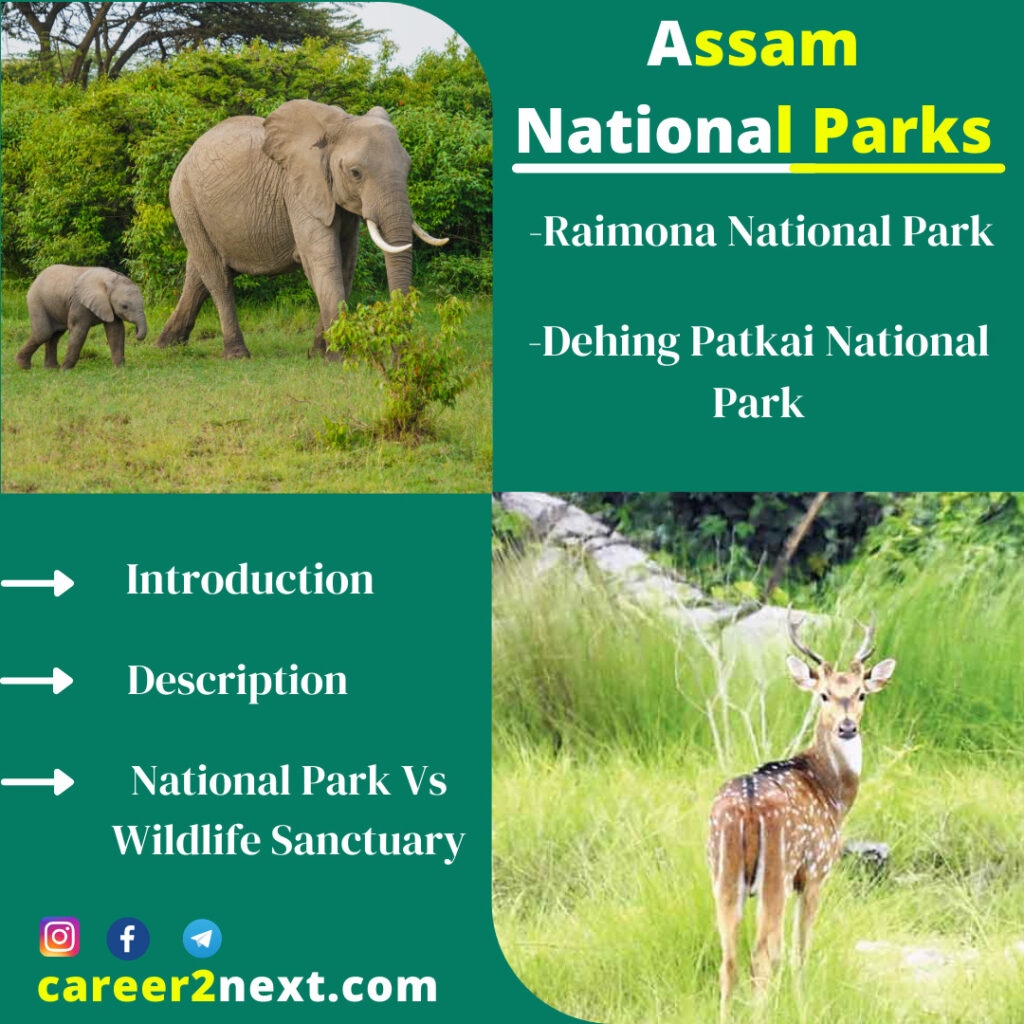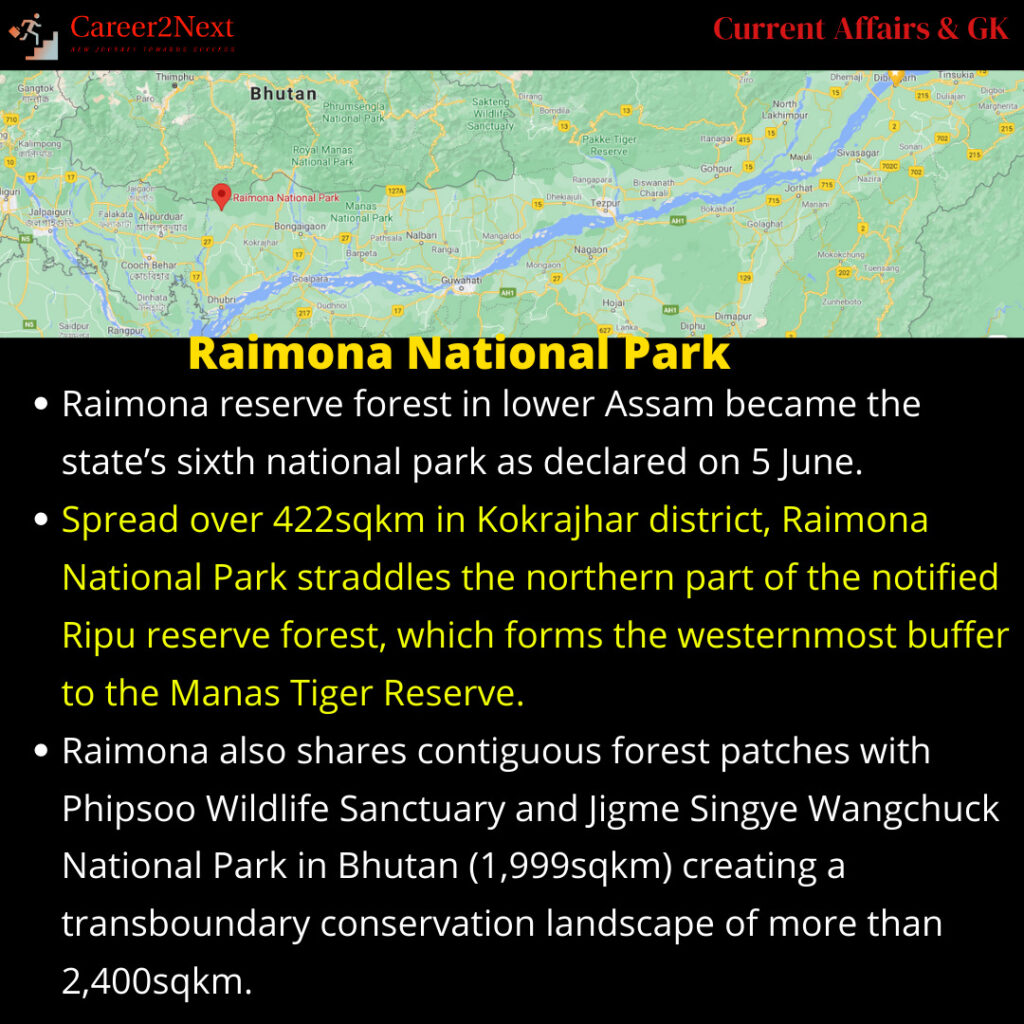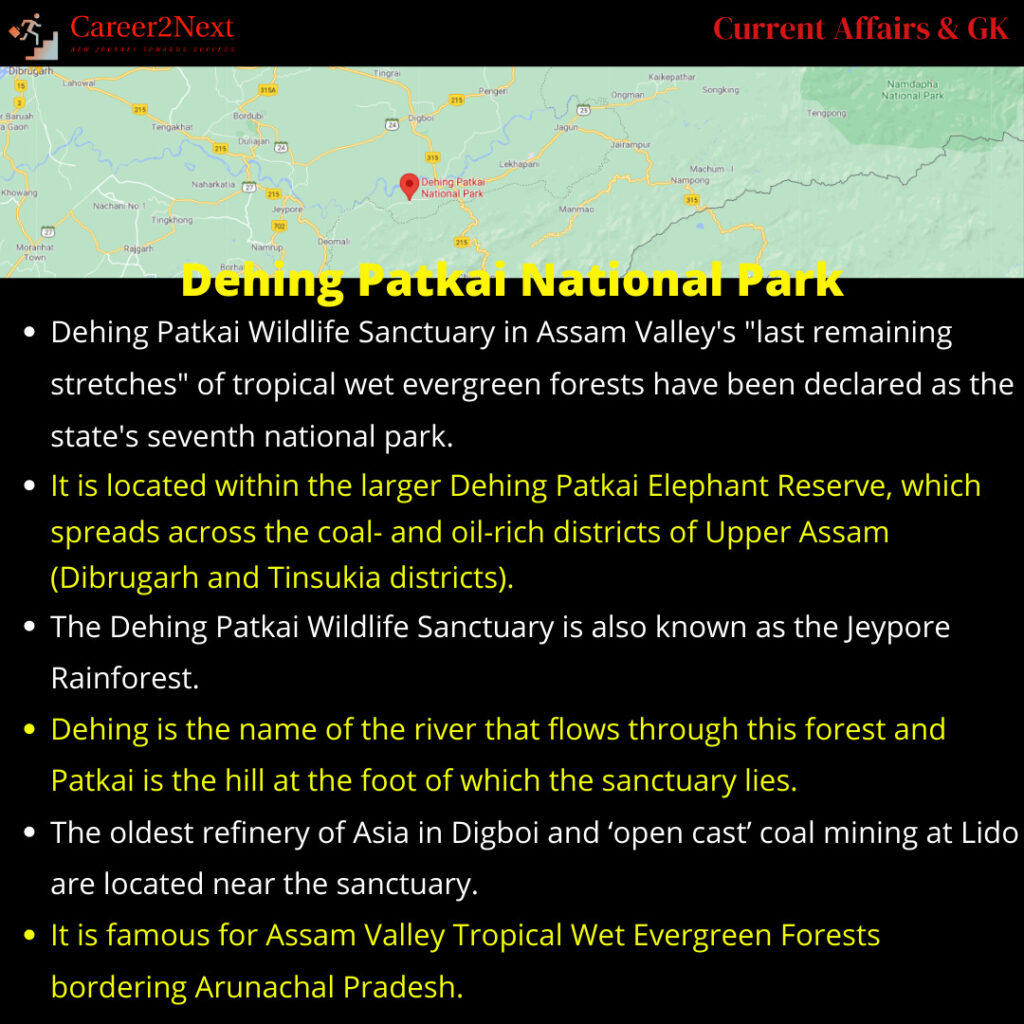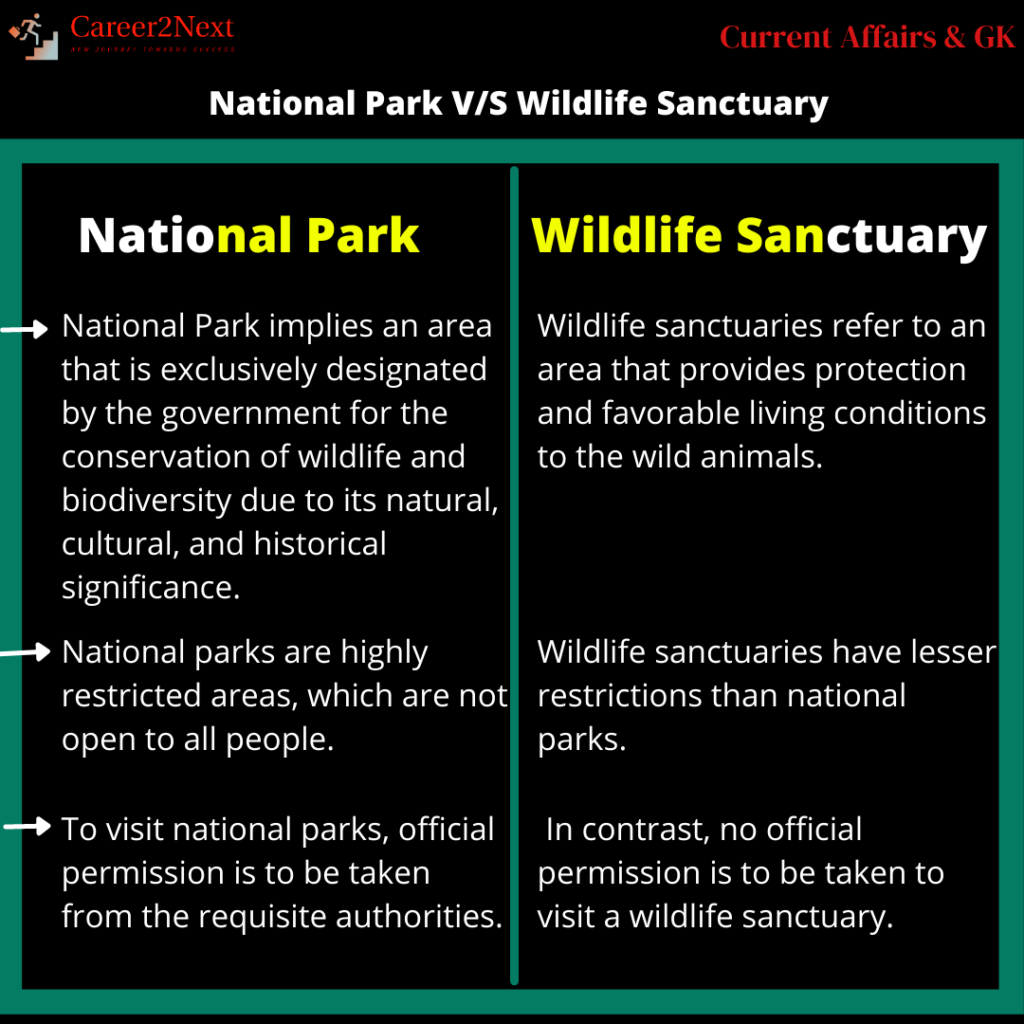- Intoduction - Description about newly added Assam National Parks [Raimona National Park] [Dehing Patkai National Park] - National Park Vs Wildlife Sanctuary
Introduction – Assam National Parks
- The Assam government declared the designation of Dehing Patkai Wildlife Sanctuary & Raimona Reserve Forest as a National Park.
- Assam already has five national parks—Kaziranga, Manas, Dibru-Saikhowa, Nameri, and Rajiv Gandhi Orang National Park.
- Apart from these five Assam national parks, two new national parks have been officially notified, taking the total number of such protected areas in the state to seven.
- Assam presently ranks third among Indian states in terms of the number of national parks.
- With ten national parks, Madhya Pradesh tops the list, while Andaman and Nicobar Islands come in second with nine
Raimona National Park-
- Raimona reserve forest in lower Assam became the state’s sixth national park as declared on 5 June.
- Spread over 422sqkm in Kokrajhar district, Raimona National Park straddles the northern part of the notified Ripu reserve forest, which forms the westernmost buffer to the Manas Tiger Reserve.
- Raimona also shares contiguous forest patches with Phipsoo Wildlife Sanctuary and Jigme Singye Wangchuck National Park in Bhutan (1,999sqkm) creating a transboundary conservation landscape of more than 2,400sqkm.
Dehing Patkai National Park-
- Dehing Patkai Wildlife Sanctuary in Assam Valley’s “last remaining stretches” of tropical wet evergreen forests have been declared as the state’s seventh national park.
- It is located within the larger Dehing Patkai Elephant Reserve, which spreads across the coal- and oil-rich districts of Upper Assam (Dibrugarh and Tinsukia districts).
- The Dehing Patkai Wildlife Sanctuary is also known as the Jeypore Rainforest.
- Dehing is the name of the river that flows through this forest and Patkai is the hill at the foot of which the sanctuary lies.
- The oldest refinery of Asia in Digboi and ‘open cast’ coal mining at Ledo are located near the sanctuary.
- It is famous for Assam Valley Tropical Wet Evergreen Forests bordering Arunachal Pradesh.
National Park V/S Wildlife Sanctuary
| SL No. | National Park | Wildlife Sanctuary |
|---|---|---|
| 1. | National Park implies an area that is exclusively designated by the government for the conservation of wildlife and biodiversity due to its natural, cultural, and historical significance | Wildlife sanctuaries refer to an area that provides protection and favorable living conditions to wild animals. |
| 2. | National parks are highly restricted areas, which are not open to all people. | Wildlife sanctuaries have lesser restrictions than national parks. |
| 3. | To visit national parks, official permission is to be taken from the requisite authorities. | In contrast, no official permission is to be taken to visit a wildlife sanctuary. |





